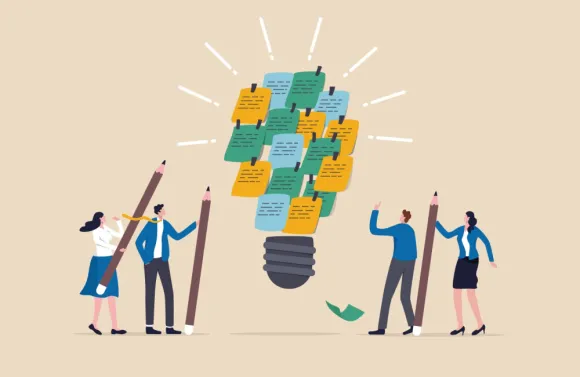
As a broker, you probably spend a lot of time advising employers on how to get the best results from their benefits programs. Today, we’re looking at one of the most important aspects of program success: addressing employee benefits knowledge gaps through better benefits education.
A common complaint among benefits leaders is that employees don’t understand their benefits, especially those perceived as more complex, such as HDHPs and HSAs. This may pose a problem since some employers are trying to move their workforces in the direction of paired HDHPs and HSAs and using voluntary benefits to help maximize health and financial outcomes. Many employees particularly struggle with financial and overall benefits literacy – knowledge gaps that can be tackled with a tighter focus on employee benefits education.
Benefits Education Gaps Can Be a Real Concern for Benefits Professionals
In a survey by FINRA (Financial Industry Regulatory Authority), 71 percent of US adults indicated they had high financial proficiency — but those same adults could only correctly answer half of the questions on the included financial literacy exam. This is the Dunning-Kruger effect in action — people with low proficiency in a given area typically overestimate their abilities.
Since people are far less likely to ask questions about a topic they believe they already understand, this overestimation of financial proficiency might ultimately stand in the way of employees’ benefits comprehension.
What’s more, only 12 percent of adults living in the U.S. have health literacy inadequate to navigate the healthcare system and promote their wellbeing.
So, why should employers worry about this?
- Benefits matter to employees. According to America's Health Insurance Plans (AHIP), 56 percent of American adults said whether or not they like their employer-sponsored healthcare coverage is a critical factor in their decision to stay with a company -- based on the latest findings from Voya research, 72 percent said they'd even consider taking a lower-paying job if it offered better benefits.
- Comprehension impacts benefits choice. Poor comprehension can result in haphazard benefits decision making, which can be bad news for employees and employers. Aflac’s WorkForces Report finds that 51 percent of employees still don’t fully understand their policies, including things like deductibles, copays, providers in their network and more. What’s more, when it comes to open enrollment and coverage selections, employees often regret their decisions with 25 percent failing to adjust their benefits to match their lifestyle changes and another 20 percent forgetting to make changes by the deadline, according to a study by financial service firm Equitable.
- Comprehension impacts benefits use. Poor personal health literacy can lead to suboptimal care choices. A recent survey released by the Bentley-Gallup Business in Society found that less than 20 percent of Americans say they know how much they will have to pay before receiving health care treatments. These behaviors can increase costs for both employees and employers.
As a broker, you can help your clients just by making them aware of these issues. But what if you want to go a stage further?
Identifying and Addressing Benefits Knowledge Gaps
How an employer communicates and educates on the benefits they offer is almost as important as the benefits themselves.
Arguably, an outstanding but poorly communicated benefits package is effectively less valuable than an average package that’s easy to understand. Existing and prospective employees may fail to understand the true value of the benefits they are offered, resulting in the potential loss of top talent.
The first step in improving employee benefits comprehension is understanding where knowledge gaps exist. Here are a couple of ways for employers to get started with this:
- Solicit formal employee feedback. Surveys and other solicited feedback on current and possible benefits offerings are an excellent way to identify knowledge gaps. Framing research as a “quick quiz” can make the process seem more enjoyable for employees, which may improve participation. There is also evidence to suggest that quizzes (along with immediate results and explanations) may be beneficial to individuals’ long-term retention of knowledge. Quiz results are also likely more empirical than self-reported knowledge gaps, as we’ve already seen that many people overestimate their financial literacy.
- Examine medical claims history. A regular review of employees’ claims history is likely to uncover avoidable issues like overspending (e.g., on out-of-network providers), poor care choices and even suboptimal choice of benefits (e.g., choosing the same plan year after year regardless of changing circumstances or options). While this may require some spot investigation, it can be a good way to uncover knowledge gaps that are hard to see in feedback or quiz results.
In a recent survey cited by SHRM, U.S. employees indicated they would particularly benefit from learning how to:
- Avoid surprise bills for out-of-network care (39 percent)
- Understand how their deductible, co-pay/co-insurance and out-of-pocket maximum affect what they pay (33 percent)
- Identify errors in an explanation of benefits (EOB) or medical bill (30 percent)
- Research and understand the cost of health care services (29 percent)
Note that while this list is a useful starting point, it’s still important for employers to proactively identify knowledge gaps and address them — it’s good to give employees what they want, but employers should also strive to give them what they need.
Once an employer has identified knowledge gaps in its workforce and can map them to specific benefits or groups of benefits, it can develop a plan to provide additional employee support and training. This support can come in a variety of ways, including:
- Working with vendors and experts to deliver benefits education sessions that address highlighted knowledge gaps.
- Providing decision support tools to help employees make the best benefits and health care consumption choices for their specific needs.
- Developing and sharing materials employees and their families can access on-demand to help them make better benefits and health care decisions.
- Following educational best practices for health care and financial literacy in their materials and communications. For more on this, you can read our recent articles: Benefit Broker’s Guide to Stronger Open Enrollment Communications and How to Boost Employees’ Personal Health Literacy.
Getting This “Right” is a Win-Win-Win
While it’s true that addressing employee knowledge gaps is far from easy, it can have a high return on investment (ROI) for everyone involved — including your employer clients:
- Employees are empowered to make better decisions, potentially resulting in improved health and financial outcomes.
- Employers may save money (due to better employee health care choices) and have happier, healthier and more productive workforces.
This makes improving employee benefits education a truly win-win proposition — and you should emphasize this point to your employer clients.
As a broker, you aren’t left out of the party, either. You can use the insights from the process to improve your approach to educating employees, share insights with your clients and help them develop a plan to better support their workforces.
Make Benefits Education and Consumption Easy
At Benefitfocus, we help organizations maximize the value of their benefits programs by simplifying the experience, boosting employee engagement and making it easier for employees to choose and use benefits that support their optimal health and financial outcomes.
Some of the benefits include:
- Our technology platform simplifies administration, drives efficiencies and enables organizations to focus on what’s most important.
- We make it easier for employees to make smarter benefits decisions through a connected experience across health, retirement & savings.
- We support better health and financial outcomes through powerful insights and a personalized experience that engages employees year-round.
Want to learn more? Explore our end-to-end benefits solution for you and your clients.
The information provided does not, and is not intended to, constitute legal advice; instead, all information and content herein is provided for general informational purposes only and may not constitute the most up-to-date legal or other information.
CN4302204_0327


